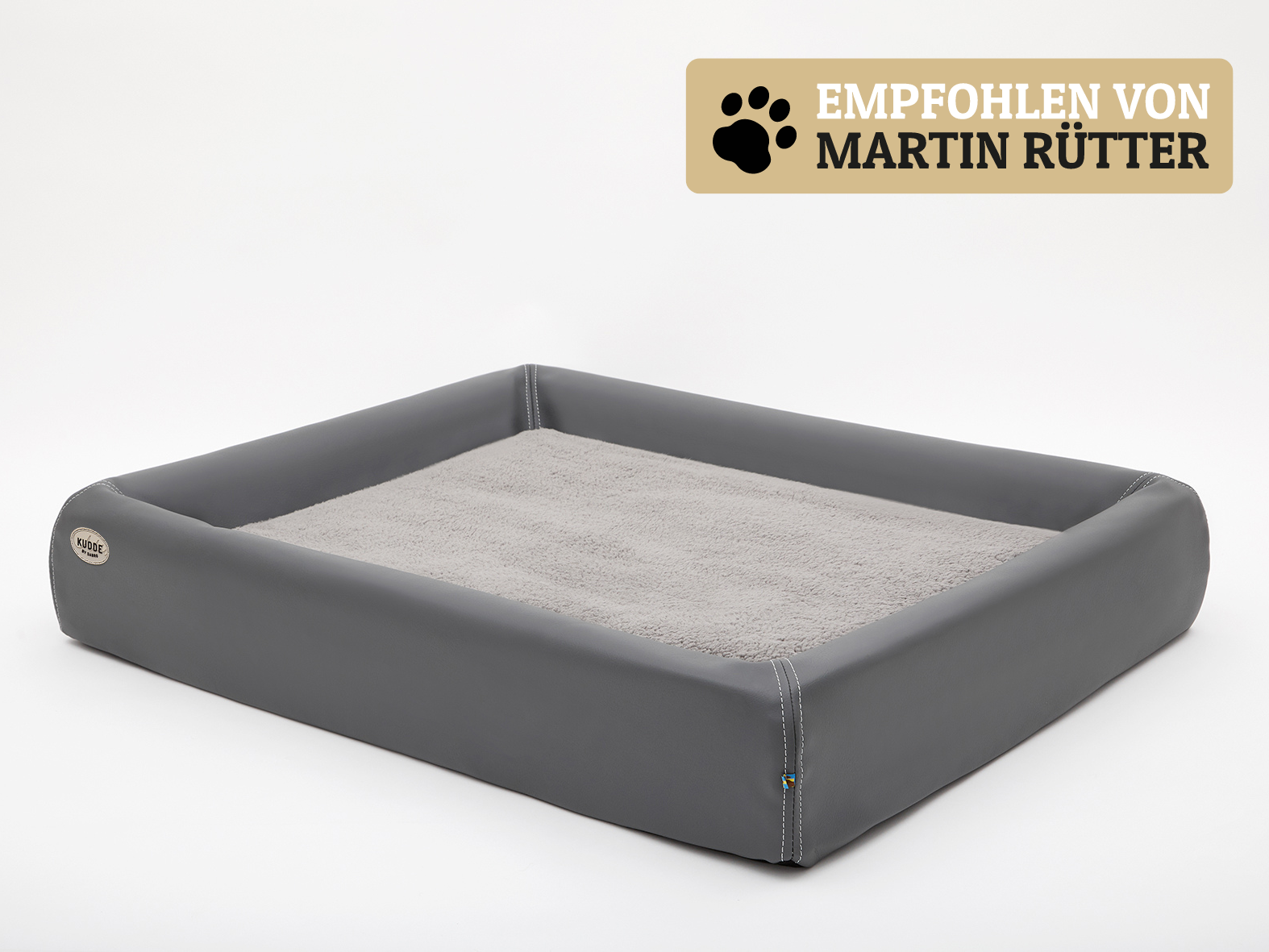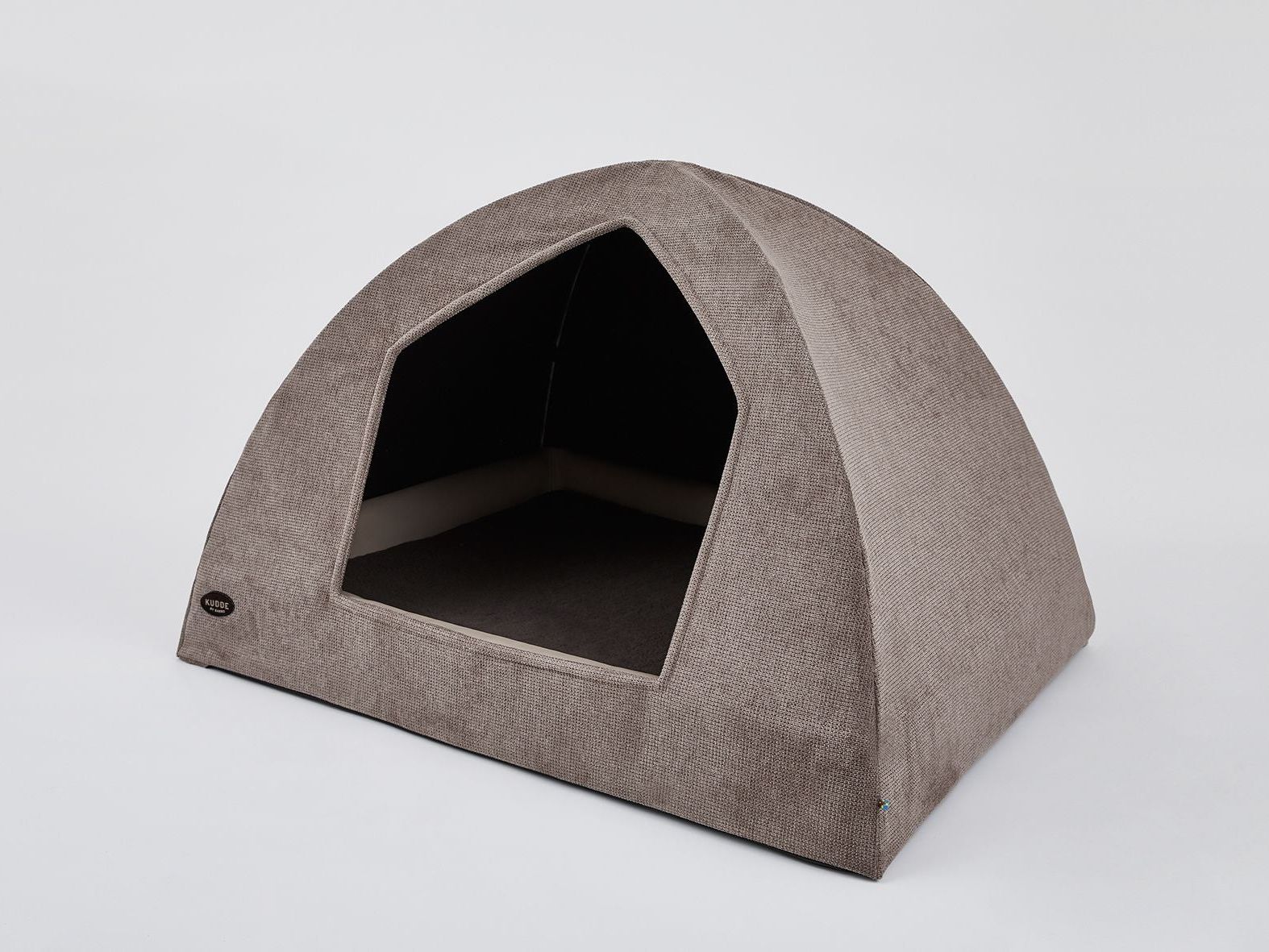You, your dog and the vastness of the mountains and forests: hiking is a newly discovered leisure activity these days. Lots of fresh air, unforgettable adventures and a good feeling despite tired legs. But if you want to take your four-legged friend with you on a hiking tour, there are a few things to bear in mind. Just as you pack your rucksack carefully for yourself, you also need to think about your dog. Here are our tips on hiking with your dog.
Which dogs are suitable for hiking?
Ideally, you should go hiking with active dogs that love to run, such as herding dogs and hunting dogs. Of course, we don't mean that it has to be a pedigree dog, it can also be a mix, but it's more about the build of these dogs. A good point of reference is the shoulder height: this should be at least in the medium range, i.e. over 30 cm. Very small, short-legged breeds (dachshunds, chihuahuas) and short-nosed dogs (pugs, French bulldogs or very large breeds such as St. Bernards and Great Danes) can have physical problems on long tours. As a rule of thumb: you know your dog and its activity best, so take this into account when planning.
The same applies to training your dog: if he is a daredevil who doesn't listen well, you will have problems with other hikers at some point. He should already know simple commands and listen to them.
Is there a minimum age for dogs on outdoor tours?
Long walks put too much strain on the bones and joints of puppies and young dogs. We therefore generally recommend a minimum age of one year, and at least 1.5 years for large breeds. The growth phase should be complete. In the first year of a young dog's life, you can actively exercise it for 5 minutes per month. A walk with a 6-month-old dog can therefore last around 30 minutes, with a 9-month-old dog around 45 minutes. Problem: your young dog won't "show" you if it's getting too much for him, because he wants to stay with the pack and will try to "keep up".
With senior dogs, the general fitness level and whether there are any illnesses to be taken into account are decisive. If there are already problems such as back or hip problems, it is better to take it easy on your dog. So always plan walks so that your dog can manage them and make them shorter rather than too long. It is also advisable to visit the vet before setting off on a long hike to get the "go" from the doctor.
What should a hike look like so that my dog enjoys it?
A vacation with a dog is comparable to a vacation with a child. Parents will always put together a varied program for their offspring with playgrounds, recreation on the beach or lake, etc. The same applies to your dog. The same applies to your dog. Sooner or later he will get bored with just walking. So make sure there's variety: plan your route along a mountain lake where your dog can cool off a little in suitable places in summer, provided the water looks good. And don't forget to play: your dog' s favorite ball is a must in your luggage and can provide lots of fun away from the hiking trail in large meadows or fields.
How do I prepare my dog and myself/us for the hike?
Of course, everyone involved in the walk should have a certain level of fitness. You can prepare yourselves well for this by gradually extending your walks and covering longer and longer distances. Your dog should already be able to walk around 20 km on normal forest paths. Before you set off on a real hike, you should have the commands down pat: practise putting down and calling your dog during the preparation.
To increase your dog's sure-footedness, you can use whatever is lying around in the forest: fallen trees or rock formations can give your dog a foretaste of the hiking adventure.
If the path gets narrower, let your dog walk behind you. Check whether you can pick up and carry your dog without him wriggling around wildly. Does your dog know free-roaming grazing animals and how does he behave towards them? The more situations he knows, the more confidently he will master them on your hike.
Always make sure you take enough breaks and always have fresh water with you. Cycling with a dog can also be good preparation. However, be sure to follow our "Professional tips for cycling with a dog".
What should my dog pack for the hike?
A first aid kit is very important, consisting of disinfectant, bandages, scissors, a muzzle loop, tick tweezers, etc. There are even special first aid courses for dogs where you can learn how to correctly apply a paw bandage or tie a muzzle loop.
It is also advisable to pack a paw protector so that your dog can protect its paws if necessary, e.g. if it has to walk over sharp stones. It's best to practise walking with such shoes beforehand, however, as some dogs walk "like on eggs" and don't put their paws down...
For a break during a picnic or as a place to sleep when you stop off, a travel dog mat is recommended.
You should definitely take a dog towel with you to dry off after a voluntary or involuntary dip in a river or lake. And yes, you should also put dog waste bags in your rucksack so that your four-legged friend doesn't leave their droppings behind. Another good idea is a ball to play with and your dog's favorite toy. And of course a water/food bowl and treats.
It's also worth taking a look at our dog accessories for on the go category, where you'll find everything you need for a safe and relaxed trip with your four-legged friend.
Which lead do you recommend for hiking with a dog?
Well-behaved dogs can run freely off the lead on many paths. Nevertheless, you should of course have a dog lead with you. Trailing and flexi leads are not recommended, as they tend to get tangled up and pose a danger, especially in unknown and rough terrain. A collar can also be dangerous if your dog gets caught somewhere, for example.
It is best to choose a well-fitting chest harness and a short or adjustable short or adjustable leash.
Tip: if you have to cross a cow pasture where there are young animals, it is best to cross it quickly and with your dog on a short lead. Mother cows are not in a joking mood when it comes to their calves. In the event of an attack, it is best to put your dog on a lead immediately.
I have to spend the night in a mountain hut, is that a problem with a dog?
Before you set off on your hike, find out which huts are on the route and whether they allow dogs. Some inns are now prepared for dogs as guests, but dogs are often not welcome in real mountain huts and huts run by associations, especially not in shared rooms. If there is no other option, plan your tour so that it only passes huts that welcome dogs. If you are a guest, make sure that your dog is well-behaved and well-behaved.
Hiking with dogs: 9 tips for more safety on all trails
- When planning, check whether the trail is dog-friendly and see where it is better to take a different route.
- Hike in the early morning and in the evening rather than in the midday heat, ideally in spring or fall.
- Pack your dog's vaccination certificate and look up dog vets in the region where you are hiking beforehand.
- It is better to use chest harnesses, as collars can strangle your dog in dense undergrowth.
- Always take a close look at the path so that sharp-edged stones do not injure your dog's paws.
- Make sure that your dog does not drink from stagnant water lying on the path. Always give him enough drinking water in his bowl and take enough breaks so that he can drink.
- Keep an eye on cows, cattle or sheep when crossing pastures and cross the green areas quickly with your dog on a lead. If possible, take wide evasive action.
- Always pay attention to your dog's discipline, especially when wild animals are nearby.
- Observe whether your dog often lies down briefly or pants a lot. Both of these are signs of overexertion, so consider abandoning the tour.
Have you ever been on a hiking vacation with your dog or are you planning a tour soon? Leave us a comment and let us know how you're preparing.








